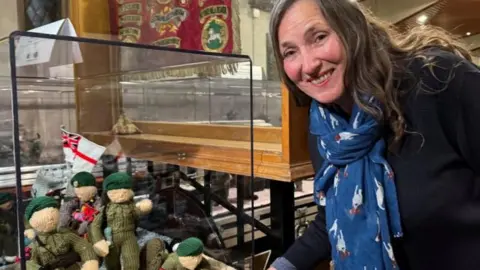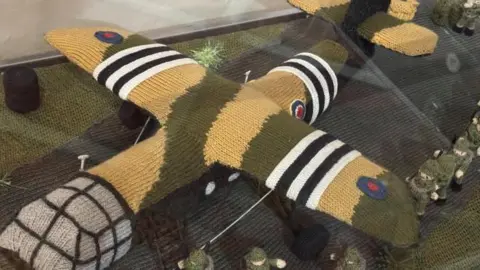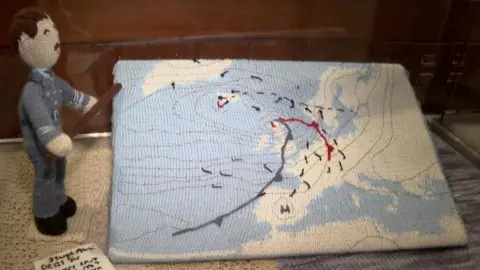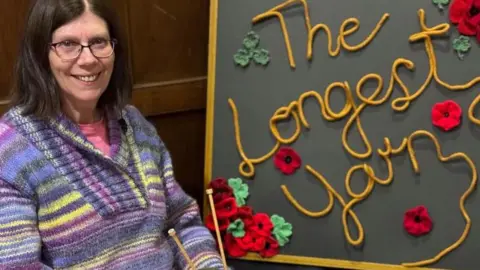Bombers, battles and balls of yarn at 'bonkers' D-Day exhibition
 BBC
BBCRAF bombers, beach assaults and balls of yarn have come together for a "bonkers" D-Day exhibition dreamt up by a woman born in Northern Ireland and brought to painstaking life by an army of knitters from across the world.
The Longest Yarn, which is on display at St Macartin's Cathedral, Enniskillen, features 80 scenes detailing the preparation and battles of the 1944 Normandy campaign.
The project is the brainchild of Tansy Forster, originally from Magherafelt, County Londonderry who is now living in Normandy, France.
She said The Longest Yarn was a "bonkers idea" to mark the 80th anniversary of D-Day.
"It started off as a topper for my garden gate and I'm afraid I got a little bit carried away," she explained.
She was inspired to put the exhibition on in Normandy where, by chance, it was seen by a member of an Enniskillen crafting group, St Macartin's knitting group, The Knitwits.
Claire Holmes said she was "flabbergasted and entranced" by the project, leading her to invite Mrs Foster and her creation to the town.
"I thought it was wonderful so it's great to be able to welcome it here," she said.
One of the displays at The Longest Yarn, which is on display until 8 February, depicts the weather report provided by Maureen Sweeney from Blacksod Lighthouse in County Mayo, which postponed the Allied invasion by 24 hours.
Another scene shows an aircraft towing a glider towards Pegasus Bridge - a role carried out by Enniskillen veteran Bill Eames, who died in 2020.

The displays were made by knitters from the UK, Ireland, USA, Australia, New Zealand, Canada and France.
Mrs Forster believes the knitted and crocheted figures have caught the imagination "because it's different and because people can relate to it".
"It's done with our own hands, and it's taken a while and there's thought and there's love gone into it."

The Enniskillen knitters have created a panel at the entrance to the exhibition and are taking part in the next Longest Yarn project, Britain at War.
They will be making a scene showing American troops arriving in Northern Ireland to prepare for the invasion.
Some of the people involved in the D-Day project have travelled to Enniskillen.

Jean Wood, who lives in County Cork, said she was drawn into the project after she saw a post on Facebook.
Although she enjoys sewing and making clothes, she had not done a lot of knitting or crocheting.
"But I do now," she declared.
Ms Wood made a field hospital near Utah Beach, with an ambulance, tents and injured soldiers.
To make the scene as historically accurate as possible, she looked at photographs and carried out extensive research.
Ms Wood says it is "brilliant" to be a part of something important.
"I love it if the children can be attracted by it and find out just a little bit about what happened in the past so that we don't forget all the guys that gave their lives and were so brave."
Jo Groves, from Cornwall, made a scene showing the first village to be liberated, depicting a church and local people greeting soldiers.
She said it took her and a friend more than 300 hours of hard work to put together.
"It was well worth paying homage to the veterans, we don't want to lose this part of our history," she added.
